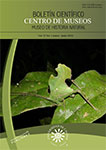Authors
Abstract
Colombia is the country with the highest number of species of Passiflora in the world and most species have edible fruits and are cultivated. This investigation aims to better understand the range of seed dormancy exhibited in the fleshy fruits of Passifloraceae species, and to determine how to break this dormancy efficiently and reliably. Thus, in this investigation seed germination of Passiflora edulis and P. maliformis were studied. Seeds were extracted, conditioned, dried and scarified. Several chemical pre-treatments were applied (e.g. GA3 500, 1000, 2000 ppm, KNO3 1%, KNO3 1.5% - KH2PO4 1.5%). Illuminated germinators were used with constant temperature (i.e. 25, 30 ºC) and alternate temperature (i.e. 15/25, 15/30, 19/33, 20/30, 20/35 ºC). Germination was recorded as radicle protrusion. Removing the seed aril with water allowed a clean germination test in both species. For P. edulis the greatest germination was obtained at 20/30 ºC, while the poorest germination was found at constant temperature. Manuallyscarifi ed seeds provided the most rapid germination in all temperatures. For P. maliformis the highest germination was obtained for non-manually scarifi ed seeds treated with boiling water and tested at 20/35 ºC. Pre-treatment with GA3
or KNO3 did not promote germination in both species. It is concluded that seeds of P. edulis and P. maliformis have physical dormancy. Scarifying seeds of Passiflora spp. enabled the water potential of the embryo to increase and for seeds to germinate. Meanwhile, the chemical pre-treatmeant of seeds showed no additional benefit. Thus, physiological dormancy does not occur, and physical barriers are the only factor preventing germination of viable seeds of the two Passiflora species studied.
References
ALEXANDRE, R.S., JUNIOR, A.W., NEGREIROS, J.R.D.S., PARIZZOTTO, A. & BRUCKNER, C.H., 2004.- Germinação de sementes de genotipos de maracujazeiro. Pesquisa Agropecuária Brasileira, 39(12): 1239-1245.
BARNIER, J., 2010.- Mercado de la gulupa en la Unión Europea. Primer congreso latinoamericano de Passiflora. Neiva, Huila, Colombia. 3-5 noviembre de 2010. Recuperado de: http://www.asohofrucol.com.co/archivos/biblioteca/biblioteca_153_Gulupa_Europa.pdf.
BASKIN, C.C. & BASKING, J.M., 2014.- Seeds: Ecology, Biogeography, and Evolution of Dormancy and Germination. 2 ed. Department of Biology, University of Kentucky. Lexington, Kentucky, USA.
BERNAL, R., GRADSTEIN, S.R. & CELIS, M. (eds.)., 2015.- Catálogo de plantas y líquenes de Colombia. Instituto de Ciencias Naturales, Universidad Nacional de Colombia, Bogotá. Recuperado de: http://catalogoplantasdecolombia.unal.edu.co.
BEWLEY, J.D. & BLACK, M., 1985.- Seeds: Physiology of development and germination. New York, Plenum Press.
BEWLEY, J.D. & DOWNIE, B., 1996.- Is failure of seeds to germinate during development a dormancy-related phenomenon?: 17-27 (in) Plant dormancy: physiology, biochemistry and molecular biology. G.A. Lang. Washington, CAB International.
BIENVENUTI, S., SIMONELLI, G. & MACCHIA, M., 2001.- Elevated temperature and darkness improve germination in Passiflora incarnata L. seed. Seed Science and Technology, 29: 533-541.
DELANOY, M., VAN DAMME, P., SCHELDEMAN, X. & BELTRAN, J., 2006.- Germination of Passiflora mollissima (Kunth) L.H. Bailey, Passiflora tricuspis Mast. and Passiflora nov sp. seeds. Scientia Horticulturae, 110: 198-203.
FERREIRA, G.F. & MORO, E., 2001.- Germinação de sementes de Passiflora alata Dryander (maracuja-doce) submetidas a diferentes tempos de embebição e concentrações de ácido giberélico. Revista Brasileira de Fruticultura, 23(1): 160-163.
FINCH-SAVAGE, W.E. & FOOTITT, S., 2017.- Seed dormancy cycling and the regulation of dormancy mechanisms to time germination in variable field environments. Journal of Experimental Botany, 68(4): 843-856.
FINCH-SAVAGE, W.E. & LEUBNER-METZGER, G., 2006.- Seed dormancy and the control of germination. New Phytologist, 171: 501-5.
GILMARTIN, A.J., 1958.- Post-fertilization seed and ovary development in Passiflora edulis Sims. Tropical Agriculture, 35(1): 41-58.
GUTIÉRREZ, M.I., MIRANDA, D. & CÁRDENAS-HERNÁNDEZ, J.F., 2011.- Efecto de tratamientos pregerminativos sobre la germinación de semillas de gulupa (Passiflora edulis Sims.), granadilla (Passiflora ligularis Juss.) y cholupa (Passiflsora maliformis L.). Revista Colombiana de Ciencias Hortícolas, 5(2): 209-219.
HEYWOOD, V.H., 1998.- Flowering plants of the world. London, BT Batsford Ltd.
HONG, T.D. & ELLIS, R.H., 1990.- A comparison of maturation drying, germination, and desiccation tolerance between developing seeds of Acer pseudoplatanus L. and Acer platanoides L. New Phytology, 116: 589-596.
ISTA, 2016.- International Rules for Seed Testing. Bassersdorf, The International Seed Testing Association (ISTA).
MABUNDZA, R.M., WAHOME, P.K. & MASARIRAMBI, M.T., 2010.- Effects of Different Pre-germination Treatment Methods on the Germination of Passion (Passiflora edulis). Journal of Agriculture and Social Sciences, 6: 57-60.
MELO, A.L.O. & DE VIEIRA, R.D., 2000.- Superação de dormência em sementes de Passiflora nitida H.B.K. com hidróxido de cálcio, ácido sulfúrico e ácido giberélico. Revista Brasileira de Fruticultura, 22(2): 260-263.
MORLEY-BUNKER, M.J.S., 1980.- Seed coat dormancy in Passiflora species. Annual Journal, Royal New Zealand Institute of Horticulture, (8): 72-84.
NIKOLAEVA, M.G., 1969.- Physiology of deep dormancy in seeds. Jerusalem, Israel program for scientific translations.
PASSOS, I.R.D.S., MATOS, G.V.D.C., MELETT, L.M.M., SCOTT, M.D.S., BERNACCI, L.C. & VIEIRA, M.A.R., 2004.- Utilização do ácido giberélico para a quebra de dormência de sementes de Passiflora nitida Kinth germinadas in vitro. Revista Brasileira de Fruticultura, 26(2): 380-381.
PATIÑO, V.M., 2002.- Historia y dispersión de los frutales nativos del neotrópico. Cali, Centro Internacional de Agricultura Tropical.
PEREIRA, K.J. & DIAS, D.C.F.S., 2000.- Germinação e vigor de sementes de maracuja-amarelo (Passiflora edulis Sims. f. flavicarpa Deg.) submetidas a diferentes métodos de remoção de mucilagem. Revista Brasileira de Sementes, 22(1): 288-291.
POSADA, P., OCAMPO, J. & SANTOS, L.G., 2014.- Estudio del comportamiento fisiológico de la semilla de tres especies cultivadas de Passiflora L. (Passifloraceae) como una contribución para la conservación ex situ. Revista Colombiana de Ciencias Hortícolas, 8(1): 9-19.
PURSEGLOVE, J.W., 1968.- Tropical Crops: Dicotyledons. New York, John Wiley and sons, Inc.
ROSSETTO, C.A.V.C., NAKAGAWA, R.C.C., SHIMIZU, J. & MARIN, V.A., 2000.- Germinação de sementes de maracuja-doce (Passiflora alata Dryand) em função de tratamento pregerminativo. Revista Brasileira de Sementes, 22(1): 247-252.
SAS, 1999.- SAS/STAT. Version 8. Cary, NC, SAS Institute Inc.
SEVERIN, C., SALINAS, A., GATTUSO, S., GATTUSO, M., BUSILACCHI, H., GIUBILEO, G. & AGUIRRE, A., 2003.- In vitro germination of Passiflora caerulea L. seeds. Journal of Tropical Medicinal Plants, 4(1): 97-101.
SNOW, A.A., 1982.- Pollination intensity and potential seed set in Passiflora vitifolia. Oecología, 55: 231-237.

 PDF
PDF
 FLIP
FLIP






















